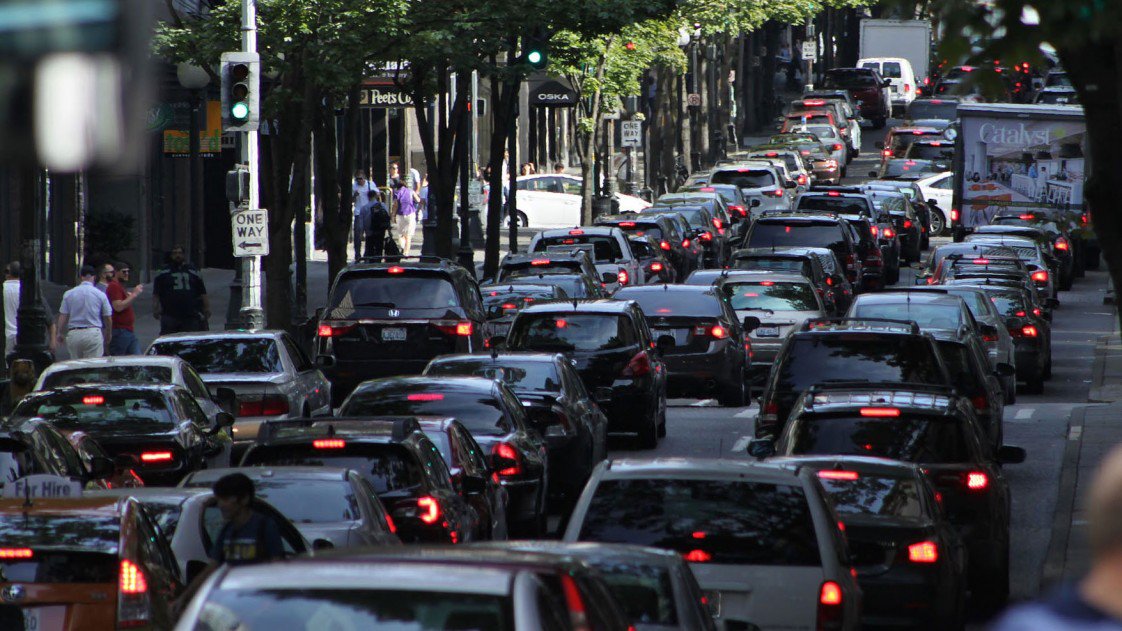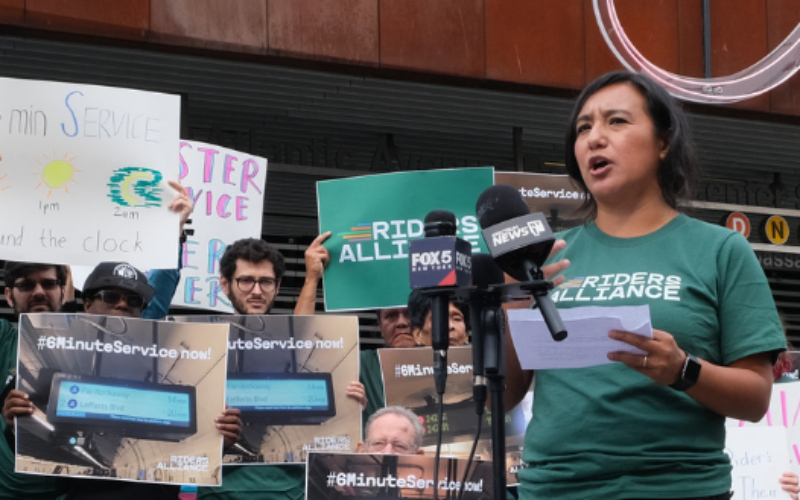
Uber's new Movement platform doesn’t tell cities how Uber itself is affecting the transportation system
Over the last several months, Uber has rolled out its Uber Movement platform, which allows users to see travel times for its fleets in 11 American cities. The company is eager to portray this peek into its trip data as a refreshing shift toward transparency. But Uber Movement is no substitute for the full data cities have been asking for.
Uber Movement is a publicly available tool that provides average travel time data between two zones in a city or region at a given time and date. A feature that went live this week also provides vehicle speed data by street segment in select cities. Uber asserts that the data can be used by planners, advocates, and researchers to better approximate travel times across US cities and guide decision-making.
This is helpful as far as it goes. Looking at travel speeds can help advocates pinpoint where bus lanes, queue jumps, and other transit priority treatments are needed.
But Uber Movement doesn’t tell cities how Uber itself is affecting the transportation system. Research has shown that Uber and Lyft add significant traffic volume in large, dense cities, exacerbating congestion that slows down transit service. To better manage the challenges posed by Uber and Lyft, cities should demand more robust trip data from them.
In New York City, for example, the Taxi and Limousine Commission (TLC) requires transportation network companies like Uber, Lyft, Juno, and Via to report detailed information on all pick-ups and drop-offs. The companies provide the date, time, and location of pick-ups and drop-offs to the intersection (to assuage privacy concerns, the precise address is not included), as well as information on the fare collected and the amount the driver was paid for the trip.
The information available to the TLC goes well beyond what is offered in Uber Movement.
Equipped with full data on all trips, the TLC can accurately assess the impacts of Uber and Lyft on the transportation system. This in turn enables New York City to make well-informed regulatory decisions regarding Uber and Lyft’s operations. The TLC recently imposed a minimum wage standard for Uber and Lyft drivers, for instance, which in addition to improving pay has been credited with increasing vehicle utilization rates and curbing the companies’ traffic impacts.
Origin and destination data can also highlight where cities need to expand bus service, especially during the evenings and weekends, and where investments in bus stops and safer pedestrian access are needed.
More cities should require full trip data from Uber and Lyft. TransitCenter urges cities to work together to put forward a consistent and collective demand for trip data from Uber and Lyft (see more in our report, Private Mobility, Public Interest). While many states — not cities — have regulatory authority over Uber and Lyft, cities can negotiate from a position of strength by banding together.
If cities collaborate, they can get the data they need from Uber, Lyft, and other transportation network companies to enable better regulation and public investment decisions.
 On the Brink: Will WMATA’s Progress Be Erased by 2024?
On the Brink: Will WMATA’s Progress Be Erased by 2024?
The experience of being a WMATA rider has substantially improved over the last 18 months, thanks to changes the agency has made like adding off-peak service and simplifying fares. Things are about to get even better with the launch of all-door boarding later this fall, overnight bus service on some lines starting in December, and an ambitious plan to redesign the Metrobus network. But all of this could go away by July 1, 2024.
Read More Built to Win: Riders Alliance Campaign Secures Funding for More Frequent Subway Service
Built to Win: Riders Alliance Campaign Secures Funding for More Frequent Subway Service
Thanks to Riders' Alliance successful #6MinuteService campaign, New York City subway riders will enjoy more frequent service on nights and weekends, starting this summer. In this post, we chronicle the group's winning strategies and tactics.
Read More